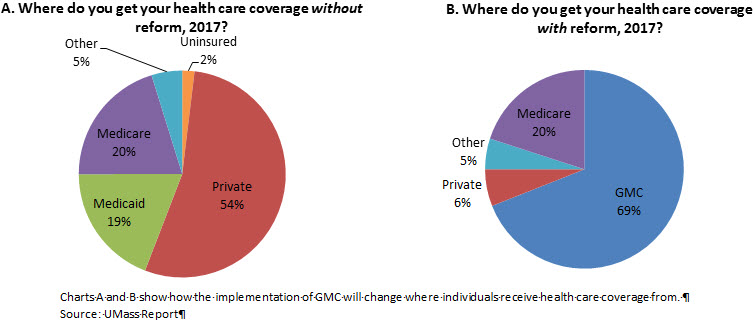7 by Q4 2018. The ACA still makes a split decision from Americans in 2019, according to the American analytics and advisory business, Gallup. However, the ACA proved durable with time. We'll see what the brand-new Presidency (2021-2024) brings. The Bismarck and Beveridge models have had a lasting impact on the majority of European countries.
Since the execution of the CMU (universal healthcare protection), the French system, for instance, has ensured that everybody has access to healthcare. Work no longer identifies access to health care, as is in theory the case. However funding approaches have not been cast doubt on. In all nations affected by the English model, moneying primarily originates from taxes, while in other countries, it is primarily drawn from social contributions.
These distinctions in funding are linked to how the system is organized: in general,, on the other hand,. So, how is health care moneyed in Europe? Each nation has its own system. There is no single European health care system as such. Social defense does not fall under the jurisdiction of the European Commission.
It offers the holder the right to access healthcare during a momentary remain in another EU nation, the UK, Norway, Iceland, Liechtenstein, or Switzerland.). In other words: Healthcare is a nationwide topic only. More than 1,500 billion is spent in the European Union (including the UK) on healthcare. Confronted with the sharp increase in health care costs, all European countries have actually tried to control spending while enhancing the performance of universal healthcare systems in place.

Not known Factual Statements About Why Single Payer Health Care Is Bad
The situation was unchanged in 2019. Simply put, any major health-care bill indicates readjusting a sixth of the American economy. Let's see the three significant challenges when thinking about healthcare system management. The very first difficulty is to keep or enhance people' health by (medical or otherwise) of the general public.
There are a number of priorities to handle the resources readily available, such as: enhancing the system by rendering treatments paperless, freeing clients up from the lots of administrative procedures linked to the management of healthcare. If the aim is to, the battle versus mistake, scams, and abuse must, of course, should be consisted of.
This is a concern of some magnitude. In the, the overall variety of deaths due to iatrogenesis in 2001 reached 738,936. The number of deaths caused by heart illness was 699,697, and 553,251 deaths were triggered by cancer (source: American Iatrogenic Association 2002). In France, in 2004, the variety of deaths arising from iatrogenesis was greater than 10,000, and 3.
A financial evaluation of this problem is tough to bring out. No sensible study associating with the quantities involved was to be found. However the causes of the phenomenon are known. such as physicians lacking info or training, clients requiring information or education, prescription mistakes (unsuitable medication: dosage, procedure, treatment), over-prescription or insufficient prescription, a lack of information on the patient (allergies, signs not all considered, multiple pathologies), an under-estimation of drug interactions and self-medication.
Not known Details About Which Of The Following Frequently Causes Health-care-associated Infections Of The Gi Tract?
Much better information systems might play a part in cutting this figure. This reduction is among the goals of the Personal Medical File. is likewise a substantial difficulty. Simply think of it., in between $75 billion and $250 billion, according to the FBI, are lost to scams. In 2019, $3,800 billion or $3.
, around 6% to 10% of spending in the healthcare sector is lost to scams, according to the European Healthcare Scams and Corruption Network (EHFCN)., which invested 1,482 billion on healthcare in 2016 (10% of GDP), https://articlescad.com/indicators-on-how-much-do-home-health-care-agencies-charge-you-need-to-know-648592.html this implies over 140 billion were lost because year alone. Feedback from interviewees in a research study we conducted showed that the higher EHFCN fraud figure (10%) is closer to the real expense of this problem.
These aspects can often lead to drastic improvements. In, with the universal healthcare SESAM Vitale program, for example: Patients are now reimbursed after 5 days, rather than after 2-3 weeks (due to documentation). 1. 257 billion electronic claim forms were utilized in 2019; 93% of all claim forms with administrative productivity and treatment costs were divided by 6 for the claims in concern.
is a card with an ingrained microcontroller that certifies privilege to health insurance. There's more. The intro of electronic claim kinds and the cut in the number of statement sheets implies that 3,6 billion A4 sheets of paper are saved per year. They are no longer produced, printed, dispersed, stored, or ruined.
What Is Health Care for Beginners
This record, for that reason, cuts mistakes and hesitancy in emergency situations and enhances the quality of services provided. It likewise boosts cooperation between all healthcare employees, pooling all available information on clients into a central file. Smart EMRs limit the variety of medical interventions and ensure that the care offered clients is consistent.
The term describes any scenario where details is passed in between health care specialists electronically (family doctors or experts, care employees, pharmacists, etc.). This info might be messages, letters, signals, outcomes, images, administrative data, complete files, and so on, for medical diagnosis, therapy, or monitoring - how many jobs are available in health care. In regards to administration, the outcomes obtained are excellent.

for clients and health care experts and should be executed in the healthcare sector. Yet this is not the case in numerous countries. Carrying out healthcare cards with and would allow the production of personalized, online services, a quintessentially patient-centric technique, yet these initiatives are still in the advancement stages. The capability to verify benefits, expiration dates, duplicated, and multiple uses is, on the entire, underused.
Yet cards have an essential role in creating constant databases, automatic reading of information, and temporary or long-term personal local storage of extra data such as blood groups, allergic reactions, chronic illness, and associated treatments. Electronic services that have currently been implemented in European nations for universal health care plans, and in the rest of the worldwith recognition systems, electronic signatures, and electronic authentication - plainly show: The crucial elements (microchip cards, public crucial facilities, authentication, and so on) of a modern-day health care system can count on robust technology to rise to the obstacles provided by fraud, abuse, and errors.
The 3-Minute Rule for How Much Would Single Payer Health Care Cost Per Person
, including the German Gesundheitskarte (photo above) or Chifa card, an eHealthcare solution in Algeria. Our care tasks provides us with an excellent summary of the technology involved, its applications, and the quality of information systems, along with the social context of its use (how many health care workers have died from covid). In addition, our professionals have actually offered, generally to eliminate fraud and cut the number of errors.
The OECD, with its core mission to promote policies to improve the financial and social wellness of people all over the world, brings much pertinent experience supporting countries to attain and sustain universal health protection (UHC). The OECD screens and examines essential elements of universal health coverage, and examines the future sustainability of universal health systems.
The OECD's contribution to assisting nations attain and sustain universal health protection. Universal Health Coverage has to do with everyone having access to good quality health services without suffering financial challenge. Although most OECD nations provide all their residents economical access to a thorough plan of health services, they face challenges in sustaining and improving such universal systems.